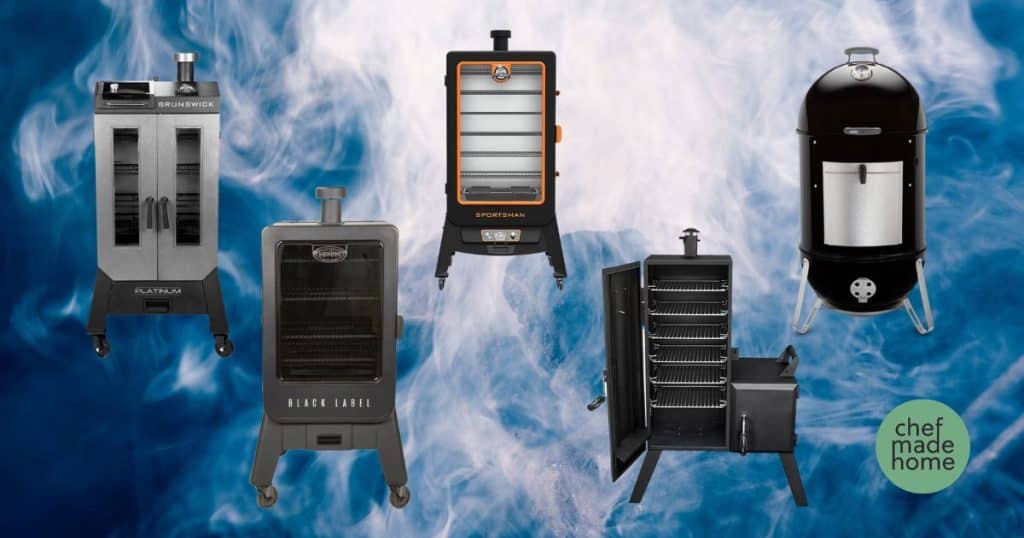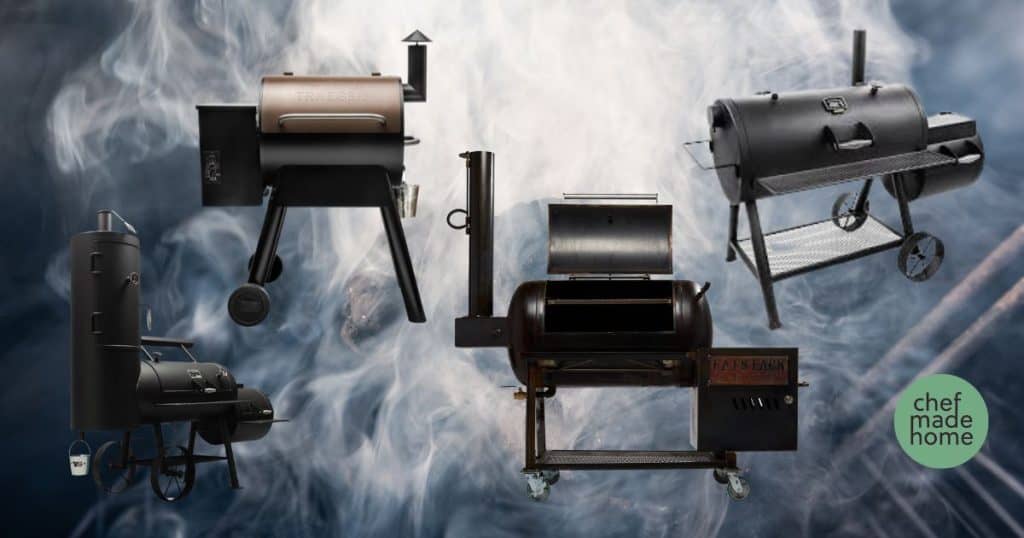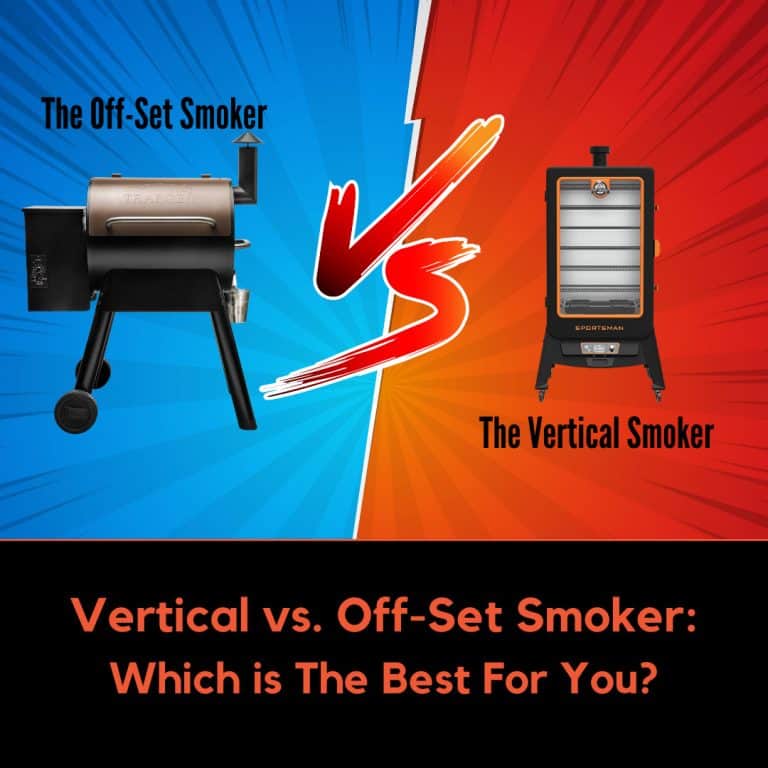20% off first coffee subscription order with code COFFEECLUB20
Vertical or horizontal offset smoker? It’s a tough choice, and there’s no easy answer. Both have their pros and cons, so it really depends on what you’re looking for in a smoker. Keep reading to learn more about each type of smoker, and which one might be the best fit for you.
What is the Best Smoker for me?
Ultimately, The Best Smoker for you is the one that fits your needs and budget the best. When it comes to smokers, everyone has different needs and budgets. If you’re looking for ease of use and a compact size, an electric smoker may be best for you. On the other hand, if you need serious smoke power and large cooking capacity, a wood-fired smoker is your best bet.
The best smoker for you is out there – all that’s left to do is weigh your options with affordability and quality in mind – and make the best decision for you.
What is a Horizontal Smoker? (Better Known as an Off Set Smoker)
For those who are serious about the art of smoking, horizontal smokers are the way to go. Unlike vertical smokers, horizontal smokers use a fuel source separate from their smoking chamber to allow for low temperatures and even smoke distribution over an extended period of time.
The most popular horizontal smoker are the reverse flow offset smokers, often referred to as an “offset” by experienced barbeque folks. This type of horizontal smoker utilizes a horizontal chamber with a separate firebox attached on one side while creating a barrier between direct heat and the main smoking chamber. Like any expert past time, drum smokers require dedication and patience in order to make your smoked meats really shine. These off-sets also require a lot of space compared to their more compact brother the Vertical.
What is a Vertical Smoker?
If you are a die-hard smoker, then you’re likely familiar with the box smokers. Otherwise known as vertical water smokers, vertical smokers combine water pans, wood chips, and vertical grills to cook food using indirect heat. This is often done by placing meat above the water pan near to the top of the smoker. The water adds humidity and traps low heat from the burning wood chips below, slowing down the cooking process so your meats or vegetables can take on a delicious smoky flavor.
The main difference between an offset smoker and a vertical smoker is that one has horizontal cooking racks for smoking while the other goes up and down in a straight line. If you’re looking for energy efficiency, slower cooking times, and great smoky flavors then investing in a good quality vertical smoker may just be worth it!

Vertical and Offset Pellet Smokers
Finding an efficient heat source is the key to success in cooking, making it essential to have a reliable fuel source. The days of having to rely on wood, coal or charcoal are thankfully long in the past — now there’s less fuss and fumes with the new electric smokers using wood pellets as fuel. What makes these pellet-fuel heat sources so great is that they heat up quickly yet are still able to maintain a consistent temperature for a longer time without having to add more wood — doubling as an energy saver!
Pellet grills have a wide temperature range making them ideal to use as both a smoker as well as a grill. The pro, and con, is that they will impart some smoke flavor but it is very controlled. If you want a deep heavy smoke like you would normally get on a brisket, the pellet grill is not for you.
Traditional Offset Smokers
Traditional offset smokers are a great way to get authentic, smoky flavors in any of your dishes. They come with reverse flow designs which help evenly distribute heat and smoke, yielding smoked brisket with exceptional flavor and texture. Barrel smokers are popular among those looking to slow-smoke ribs or shoulder cuts, enabling temperatures to be maintained up over many hours without adversely affecting quality.
Single chamber models are ideal for cooking multiple items at once, by allowing different levels of heat as well as taking advantage of the reverse flow design for smoking multiple types of food at the same time. With these traditional offset smokers, you can become a backyard BBQ master in no time!

Consider The Fuel Source
Charcoal, pellets, wood chips and other solid woods are all great fuel sources for barbecues. Charcoal is the traditional material used to fire up grills – it’s easy to light and burns steadily at an ideal temperature for cooking. Pellets are convenient and create little smoke when burning, while wood chips add a delicious smoky flavor to food; perfect if you’re looking for an extra smoked kick in your racks of ribs!
Finally, wood logs or larger chunks of wood provide flames that cook evenly and keep their heat for a long time; great for slow-cooked meals or baking pizzas and pies. Whichever type of fuel tickles your fancy, you can rest easy knowing there’s plenty of flame-tempting materials out there!

No matter what type of smoker you choose, the key is to experiment and have fun with it. Start with smaller foods, like pork shoulders and ribs, then work your way up to larger projects such as whole turkey, brisket, and more. As you advance in your smoking skills, you can easily add fuel sources like wood chunks and wood chips for added flavor. And don’t forget about traditional offset smokers or pellet grills for specialty cooking or for cooking when you don’t have time for charcoal or a smoker box. Ultimately, the best smoker for you is the one that fits your needs and budget the best. Don’t be afraid to explore new ideas and techniques until you find the one that works best for you! Enjoy the delicious rewards of your hard work!

